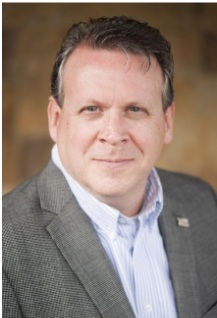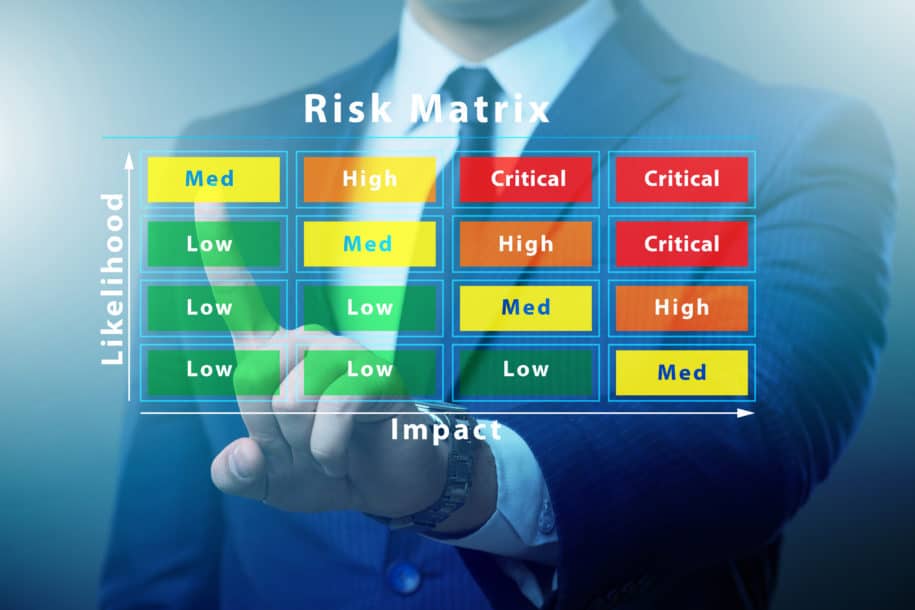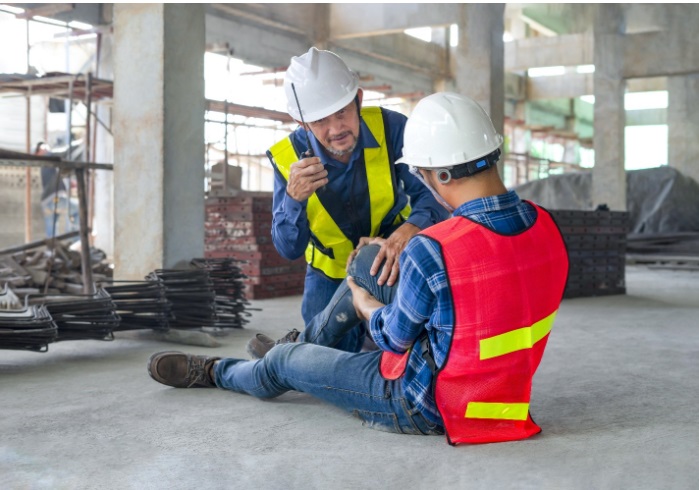When conducting traditional risk assessments, severity is commonly used as a factor when determining the level of risk involved. Severity represents the most likely consequence of a particular hazard occurrence. In other words, if a hazard exists and is not mitigated, the most likely potential outcome can be indicated by the severity rating. While common in risk assessments, it is strongly suggested to incorporate severity into standard safety observations as well for unsafe and at-risk observation findings.
A risk matrix, such as the one shown above, can be employed by observers to classify findings according to their potential level of harm. Low and Medium/Moderate findings are linked to low consequence/impact potential. Personal Protective Equipment (PPE), many housekeeping items, and minor administrative items are examples of these classifications. High and Critical observation findings are related to high consequence/impact potential. Examples include falls from heights, electrical exposures, confined spaces, struck by and caught in/between hazards. Overall, assigning severity to observation findings affords a great many advantages.
Improved Communication
Not all hazards are the same. A worker not wearing hearing protection is far different than a worker at height without fall protection. Severity of unsafe observations not only provides important clues relative to the level of risk present, but it also presents a way to get management’s attention and engagement at a system level to effect lasting change.
Enhanced Prioritization
In an ideal world, hazards identified in the field would be immediately addressed. Unfortunately, in the real world, allocating the necessary resources to permanently address a hazard could take time and effort to correct. With a large list of corrective actions assigned, severity can be used to further prioritize actions according to the risk they pose, with higher severity findings taking precedence and expedited over lower severity findings.
Team Calibration
Based on many factors such as personal bias, training, experience, and a multitude of additional items, we tend to perceive hazards and the potential risk differently. It is understood that severity assignment will be subjective and simply looking at an observer will not give you the impression if they are risk averse or highly risk tolerant. Once documented, however, the opportunity for review and discussion is now presented. Teams can now clearly review the detail of a documented hazard and have discussions around an assigned severity level for risk, helping to develop better risk acceptance criteria as an entire team. Collaboration can yield discussions around similar experiences and events that other observers may be unaware of. This calibration event can continually feed into organizational learning events.
Not all activities or environments are created equally. Some things are just inherently more dangerous than others. Recognizing the potential outcomes while observing work in progress can help to pinpoint common causal factors that can and should be acted upon and improved prior to injury. It is imperative to have an organization that values open communication and learning in order to sufficiently take proactive measures to help avoid or mitigate potentially disastrous incidents before they happen.
For more details: Click here & Contact SafetyStratus Now
AUTHOR BIO

Cary comes to the SafetyStratus team as the Vice President of Operations with almost 30 years of experience in several different industries. He began his career in the United States Navy’s nuclear power program. From there he transitioned into the public sector as an Environmental, Health & Safety Manager in the utility industry. After almost thirteen years, he transitioned into the construction sector as a Safety Director at a large, international construction company. Most recently he held the position of Manager of Professional Services at a safety software company, overseeing the customer success, implementation, and process consulting aspects of the services team.
At SafetyStratus, he is focused on helping achieve the company’s vision of “Saving lives and the environment by successfully integrating knowledgeable people, sustainable processes, and unparalleled technology”.



